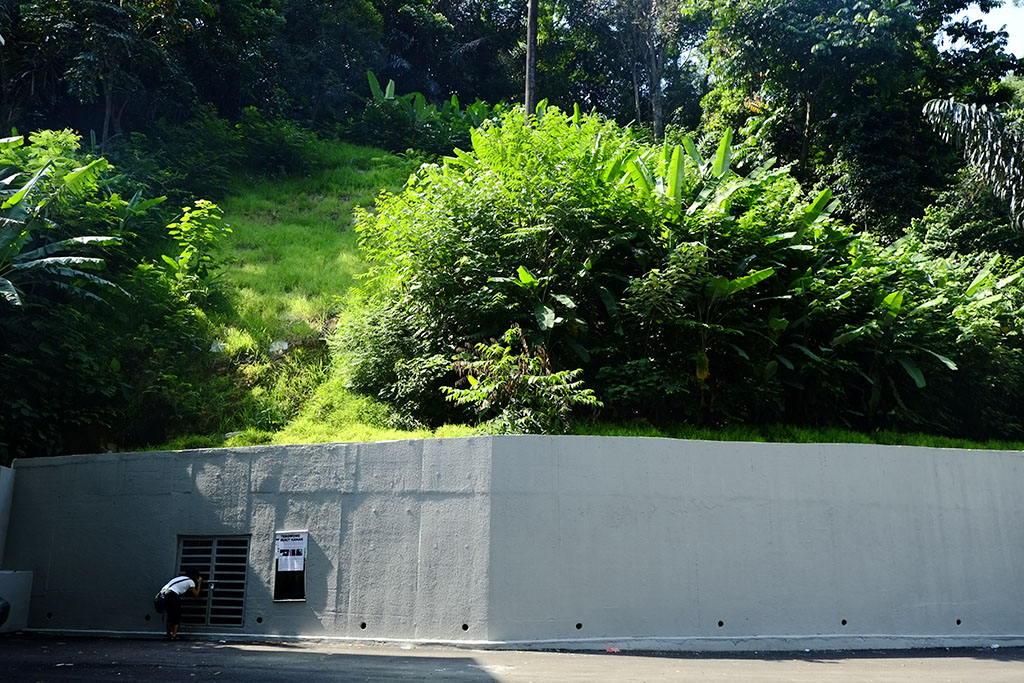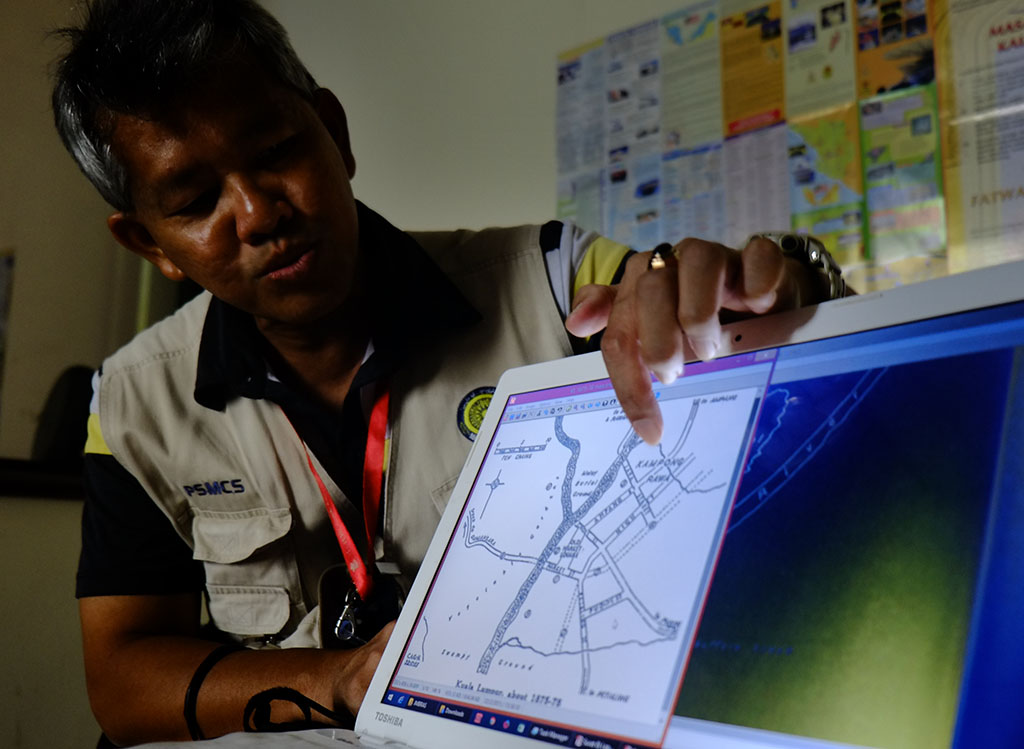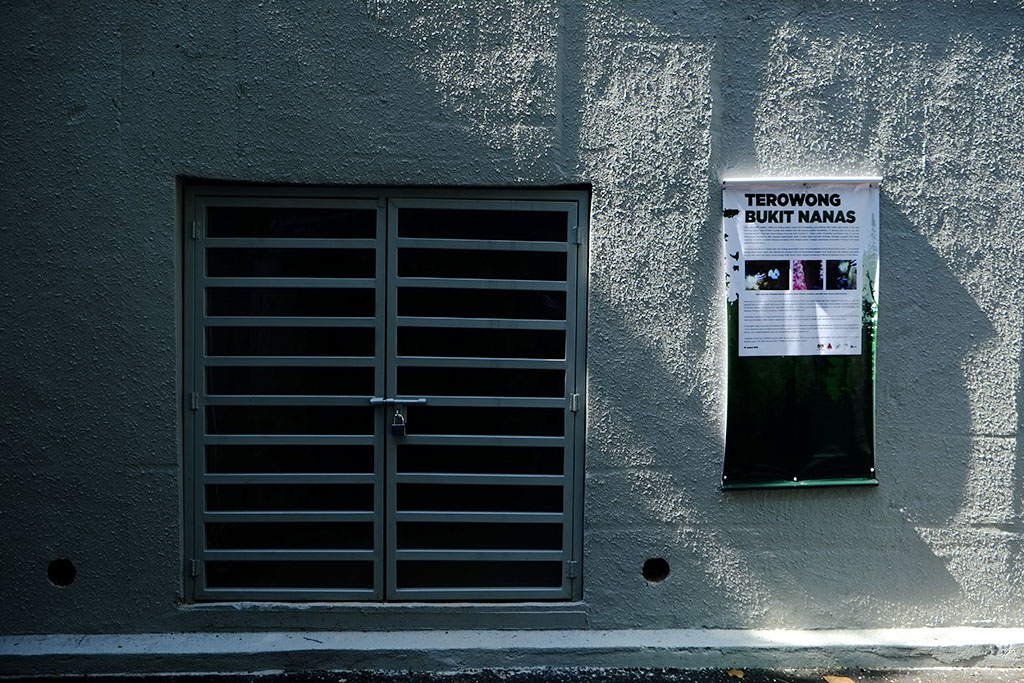The discovery of an ancient tunnel in Bukit Nanas may lead Kuala Lumpur to set the scene for another Tomb Raider or Indiana Jones movie. This tunnel, believed to be almost 200 years old, got historians excited, and us too. We did some digging ourselves, to learn more about this latest find.
Words by Susan Tam
Photos by Kamal Sellehuddin
A hideaway for drug addicts, a place to store jewels and weapons or even a secret tunnel to a magical place — all sorts of theories have been made about the tunnel at Bukit Nanas.
What tunnel you ask?
Some time in 2014, contractors and City Hall discovered a tunnel after repairing a slope of Bukit Nanas.
The hill slope collapsed in May 2013 and remedial works took place about a year later. This tunnel was then was revealed publicly at the start of this year.
The tunnel has since been restored and with a grill gate and padlock, security has been tightened to avoid vandalism.
READ: Centuries-old secret tunnel in Bukit Nanas discovered

You won’t need an ancient map or even GPS to find it. It is visible from Jalan Ampang as it’s located directly opposite Wisma Denmark and behind the Tenaga Nasional substation.
Authorities have reportedly said that the site has been preserved as a tourist attraction. That’s true, as marked on a bunting with a brief description of its discovery.
The tunnel has perplexed many researchers, including Selangor historian Faisal Dato’ Surani who eagerly told us that there could be other tunnels located within the hill itself.

He believes this recent find was built by the Mandahiling people, who came to Peninsula Malaya to flee from the Padri wars in West Sumatra some time between the 1820s and 1830s. Some of them fled to Negeri Sembilan, and Bukit Gombak (now known as Bukit Nanas) and Ampang area.
Based on a journal written by Abdur-Razzaq Lubis, the Mandahiling people originated from the northwestern part of Sumatra, and was converted into Islam during the Padri War. The Dutch intervened during the war, which sparked a migration of this community to Malaya.

“This community fled here to mine tin, and send the proceeds to the forces fighting the war,” Faisal explained. This, he was, was possibly the reason why the tunnel has stood the test of time, having been built using ancient technology mastered by this community — a skill Faisal claims that only the Mandahiling have.
One reason the community chose the hill was that it could have been the only dry land for them to set up base, as most of Kuala Lumpur had consisted of swamps at that time.
For example, Faisal said, the site where Dataran Merdeka lay was a swamp. He pointed out that a river used to run on the road that is now known as Jalan Tun Tan Cheng Lock.
He told us that he wanted to investigate and explore the rest of the hill, and urged authorities to consider better protection of these historical sites.
You’ll need to crawl in if you want to see the 10-metre tunnel and of course you’ll need permission from the Kuala Lumpur City Hall to get past the locked gate.
Faisal is a member of the Malaysia Historical Society, and explained that he was involved in the fact finding mission launched when the tunnel was first uncovered. As a representative of the society he produced a report, alongside a report from the Heritage Department that was given to City Hall to review. He hoped more research can be done in the area.
Based on historical records that he studied, Faisal believes the Mandahiling community worked with the local warlords in the area, and, a palace may have been built on top of Bukit Nanas. The site, he added, could very well be where two schools sit – SMK St John Kuala Lumpur and SMK Convent Bukit Nanas.
The palace Faisal referred to is called Istana Godang or Godang Palace, owned by Tuanku Raja Asal.
Faisal explained that there are signs that researchers know of that identified a former palace ground. “It could be based on the terrain of the land or even a type of tree planted in a strategic spot.”
This 47-year-old researcher, who is also the secretary-general of the Selangor Tanah Datar Minangkabau Association, said tunnels were part of complex military and defence strategies.
“Tunnels can also be used as a trap or to confuse enemies.” This complements their tactic of planting wild pineapples all on the hill slope to prevent enemies from invading the palace, giving the hill its current name.
The tunnels are also used as an escape route, either to the top of the hill or towards Klang river. These wartime strategies were heavily relied upon during the Klang Civil Wars in the late 1870s. The war involved a series of conflicts between Malay chiefs, and later, involving Chinese secret societes over the control of tin-rich areas in Selangor.
It’s not only Kuala Lumpur where ancient tunnels were discovered, according to Faisal, there is one in Klang, and another one known as the ‘Japanese hole’, in Kajang. “The one in Kajang may be located along where the current schools are at. Perhaps it’s not made public because students may use it to hide and play truant.”
In any case, Faisal is all for the preservation of such important historic sites, particularly the Bukit Nanas tunnel, which he believes would shed more light on the founding of Kuala Lumpur.





Reader Interactions